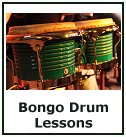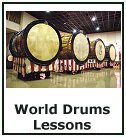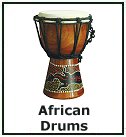Djembe Drum Lessons
Contents
The name is said to come from a phrase which translates to “everyone gather together”, which makes sense when you consider that this drum is used in ceremonial gatherings and creates a sense of community among tribal regions.
You can watch some ceremonies and dances in these djembe videos.
Djembe Lessons
Here are a few drum lessons to get you started. So far I’ve put up a lesson on basic tones and rhythms. Hoping to get some more up soon. If there are any drum topics you would like for me to cover be sure to contact me and let me know. Thanks.Basic Tones
Djembe Rhythms
Djembe Drum Lessons
Djembe Books
Djembe DVDs
Djembe Drum Construction
With the growing popularity of drum circles in the West, drum companies have started to produce these instruments out of synthetic materials. While they may not be authentic in the sense of construction, they capture the sound and feel of the African made drum. They offer many advantages over their traditional counterparts. With synthetic construction, they weigh a third of natural-made wooden instruments. Tuning is simpler, quicker and more accurate with a key-based system in place of the rope-based system. Changing djembe heads is much easier with key-based tuning than with rope-based system that requires a lot of weaving.
If you are considering purchasing djembe drums, you probably already have a good idea of what you want. I would however, like to take some time to explain the differences between the two basic kinds of djembes on the market – Rope Tuned and Mechanically (Key) Tuned djembes.
Rope Tuned Djembe
All of these drums utilize the traditional rope based tuning system. Compared to key based systems, these drums can be a lot harder to tune. Changing heads is also a long process and you’ll need the aid of a Djembe Rope Puller.
However, they do tend to provide a more authentic tone and some of the hand carved designs are beautiful. Just check out these African Djembe Drums for a few examples. Another advantage of the rope tuned drums is that you can use some animal Djembe Skins that you can’t use with mechanical shells. For example, some drummers prefer hairy, irregular shaped skins that just won’t fit on standard synthetic shells.
Keyed Drums
These djembes utilize a key tuning system which gives them a more consistent sound and it also makes changing heads easier. Many of these are made of synthetic material instead of the traditional wood shells. While it does take away from the authenticity of the instrument, the sounds is often just as good, and the shell is more durable and made for heavy transportation. Learn How to Tune Drums.
Djembes and Accessories
The pages below offer more information about djembe accessories like stands, bags and heads. You can also purchase these drum products online. African Djembes
Bags
Skins
Stands
Straps
Remo Djembes
Shop For Djembes Here!






New! Comments
Leave your comments below.